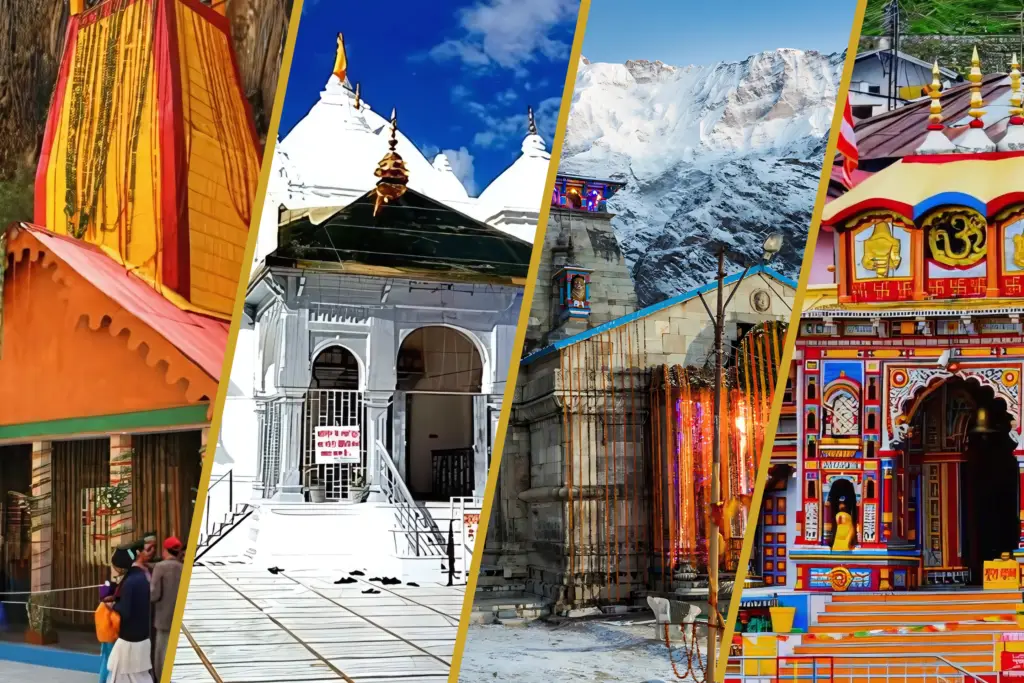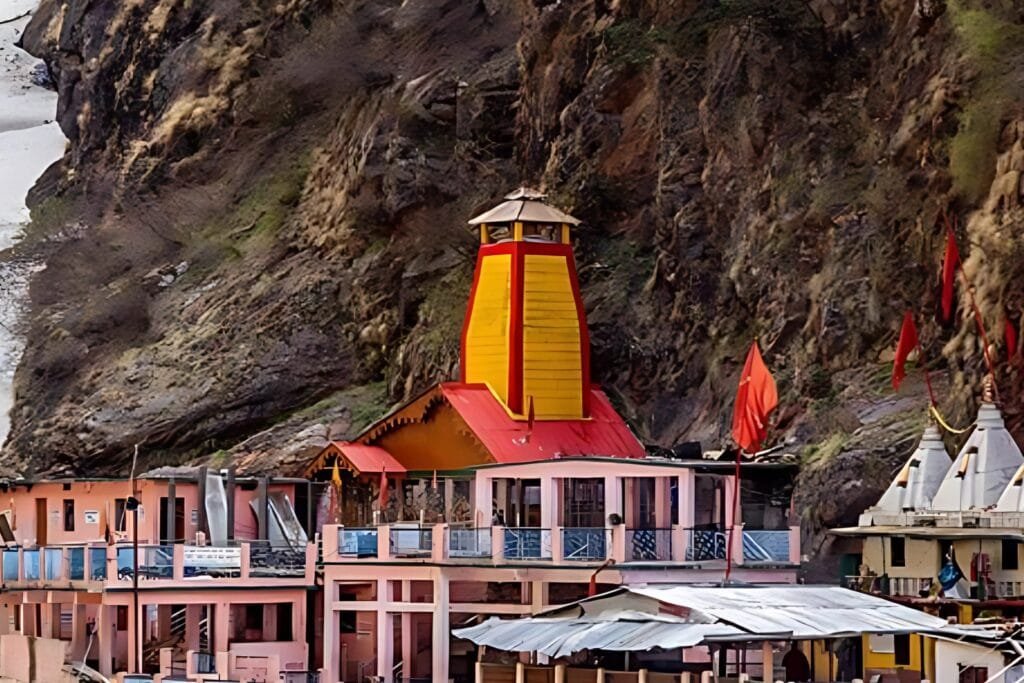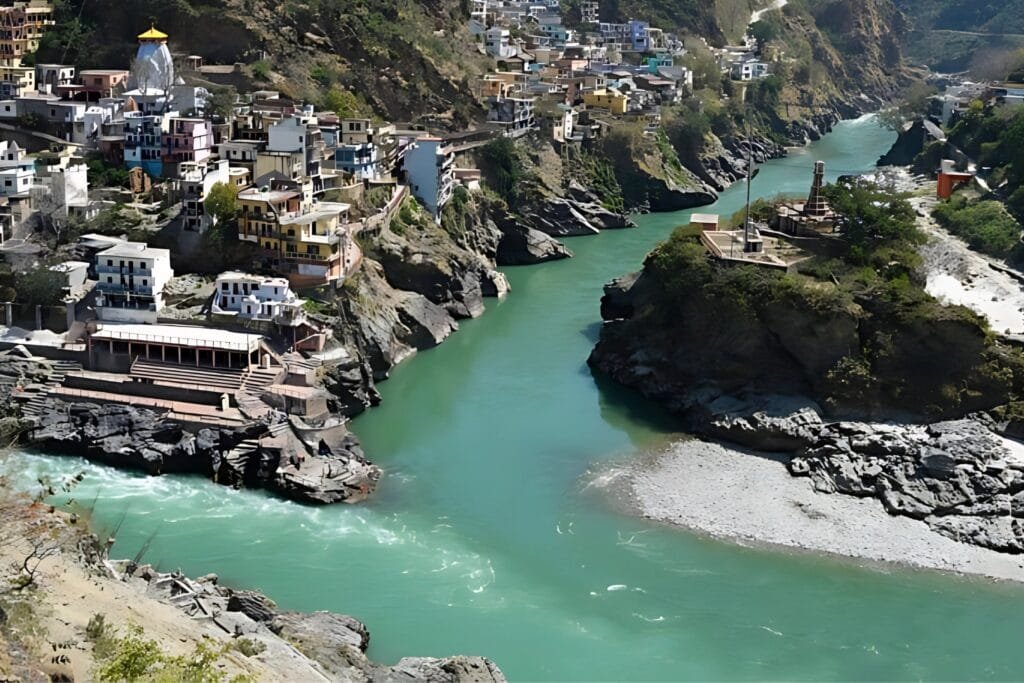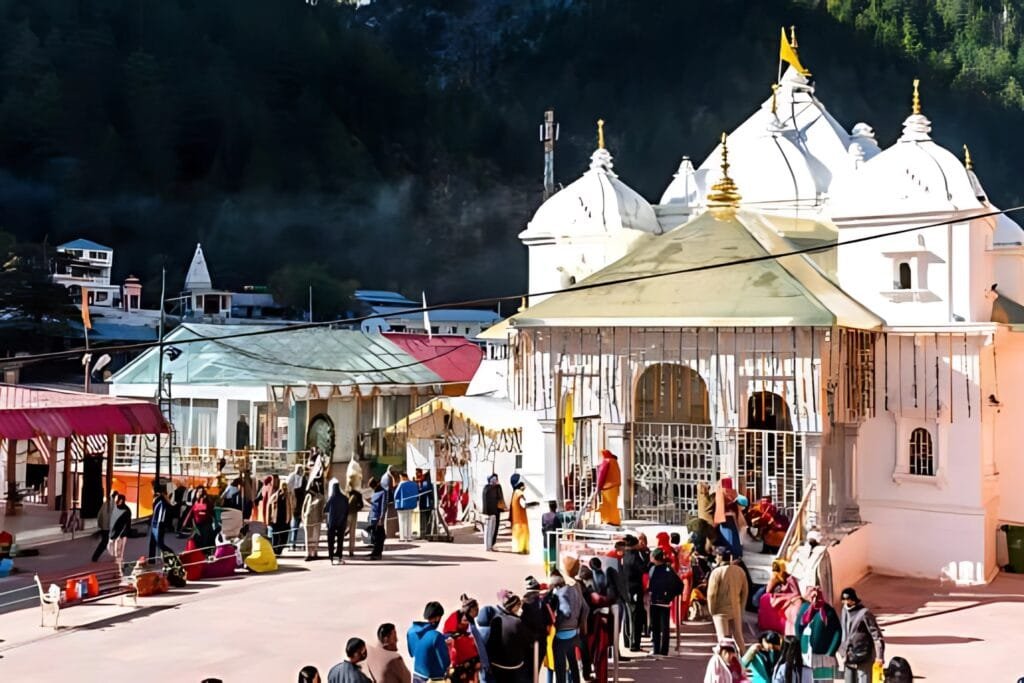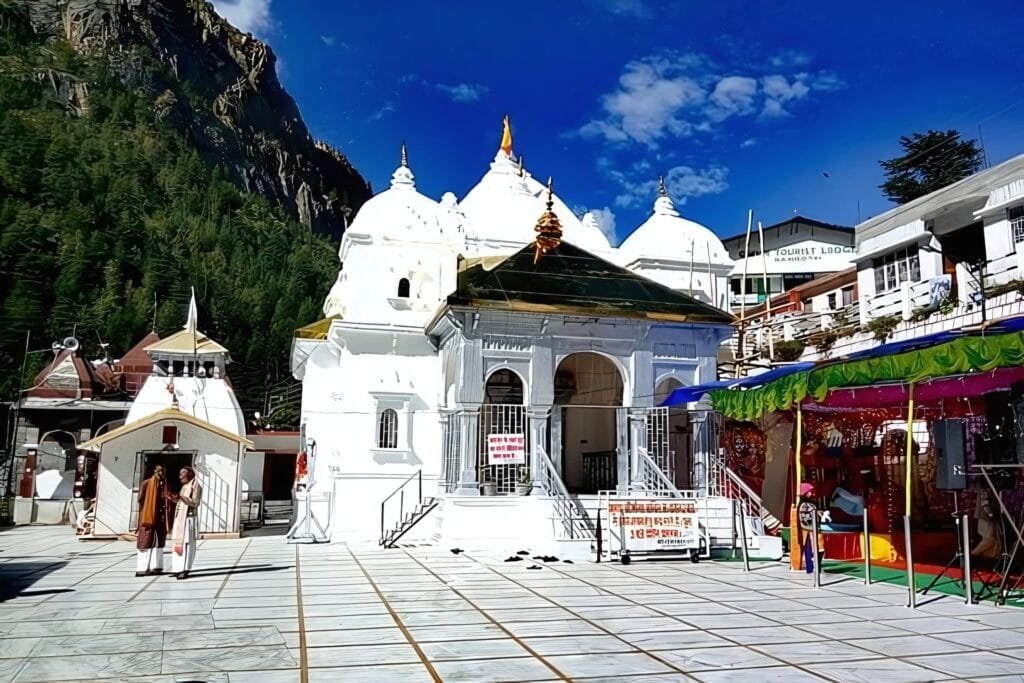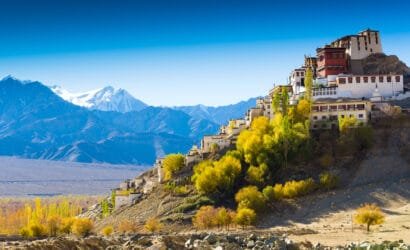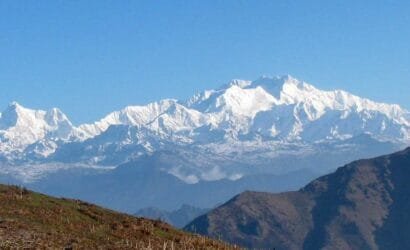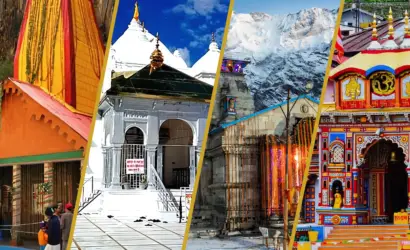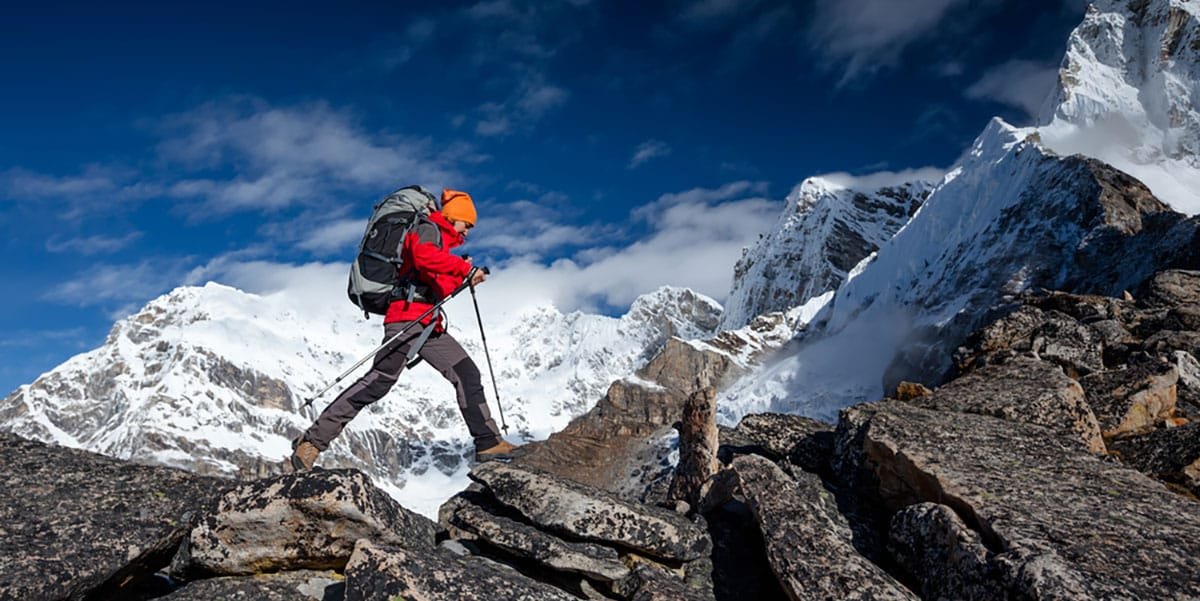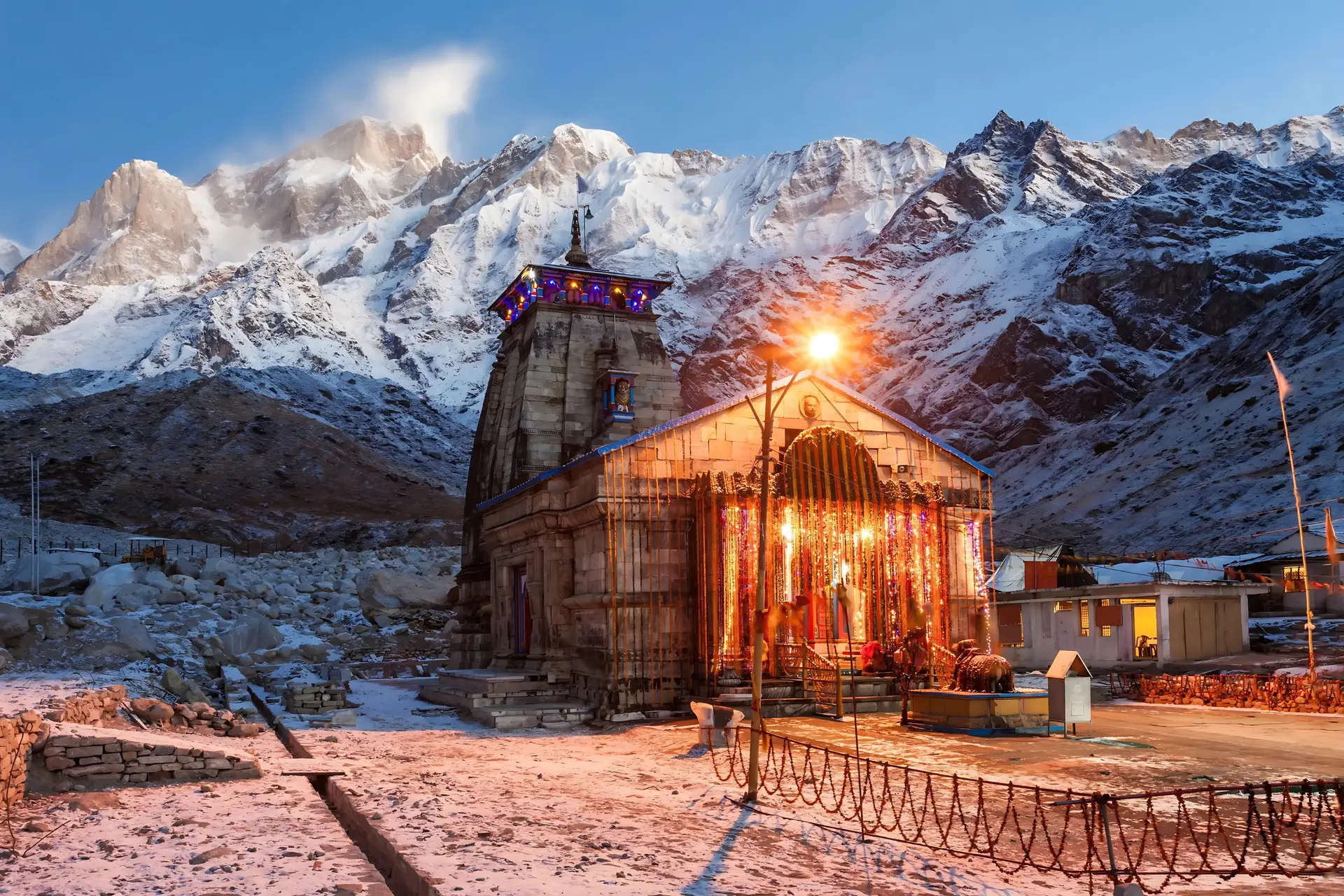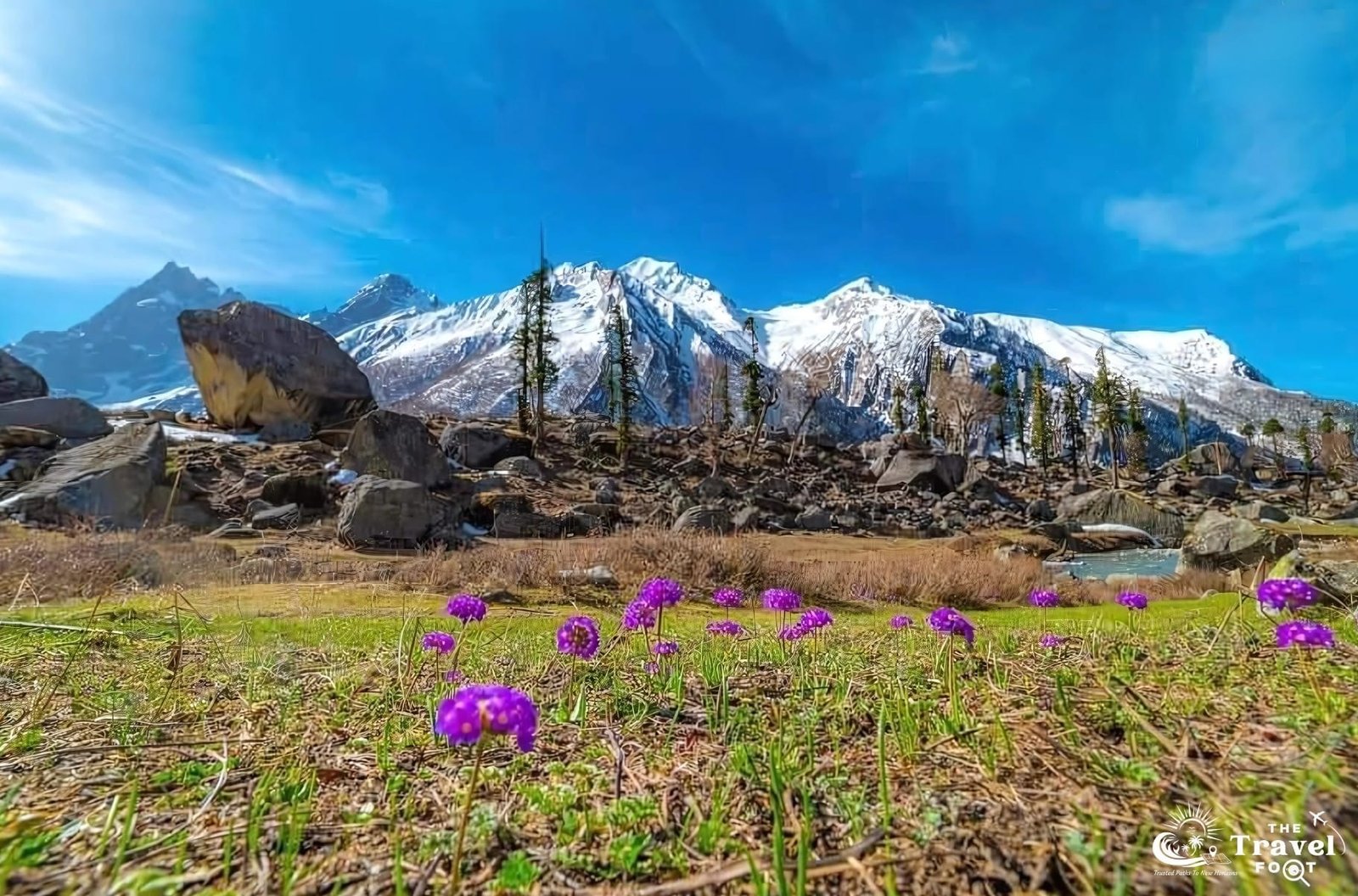Welcome to Dev Bhoomi Uttarakhand – Journey to the Abode of Gods
Embark on a transformative 10-day journey through the mystical land of Uttarakhand, fondly known as Dev Bhoomi (Land of the Gods). During this yatra, you will encounter thousands of temples that have welcomed devotees year-round for centuries. The Char Dham Yatra covers four of the most revered holy shrines in India – Yamunotri, Gangotri, Kedarnath, and Badrinath – culminating with a visit to Mana Village, the last inhabited settlement on the Indian border, nestled in the majestic Himalayan Mountains.
The Char Dham temples are located in the high Himalayas and remain closed for six months due to extreme winter conditions when heavy snowfall blankets the region. The sacred portals, or Kapats, open during the summer months (April/May) and close with the arrival of winter (October/November).
How should you complete Char Dham Yatra
Traditionally, the Char Dham Yatra is undertaken in a clockwise direction to honor the spiritual significance of the route. Therefore, the journey begins at Yamunotri, followed by Gangotri, Kedarnath, and concludes at Badrinath.
Yamunotri
Nestled in a narrow gorge near the source of the sacred River Yamuna, Yamunotri is located in the Uttarkashi district of Uttarakhand. Dedicated to Goddess Yamuna, the shrine is revered as the starting point of the Char Dham Yatra. The Yamuna River is considered the second holiest river in India after the Ganga and is believed to play a crucial role in purifying the soul and removing sins.
Gangotri
Situated in the Uttarkashi district, Gangotri is a sacred site dedicated to Goddess Ganga, the holiest and most revered river in India. According to Hindu belief, the river descended from the heavens to earth to absolve humanity of its sins. From its origin in the Gangotri Glacier to its confluence with the Bay of Bengal, River Ganga is worshipped at countless ghats by millions of devotees who revere it as Ma Ganga (Mother Ganga).
Kedarnath
Kedarnath is one of the most sought-after shrines dedicated to Lord Shiva and is part of the twelve sacred Jyotirlingas in India. The current Kedarnath Temple, believed to be over 1,200 years old, was rebuilt by Adi Shankaracharya in the 8th century on the site of an ancient temple constructed during the time of the Pandavas. The temple’s location, amidst snow-capped mountains and near the Mandakini River, adds to its spiritual and scenic significance.
Badrinath
Situated at an altitude of 3,100 meters (10,170 feet) above sea level, Badrinath is located on the banks of the Alaknanda River and is surrounded by the Nar and Narayan mountain ranges. This sacred temple, dedicated to Lord Vishnu, was established by Adi Shankaracharya in the 8th century. It holds immense significance in Hinduism as one of the four Char Dham sites and is believed to be the holiest of all Vishnu temples.
A Journey to the Abode of Gods for Enlightenment
The Char Dham Yatra is not just a physical journey but also a spiritual quest for moksha (liberation). From the serene banks of the Yamuna to the divine peaks of Badrinath, this pilgrimage offers a profound connection to faith, nature, and the divine. Prepare yourself for a journey filled with devotion, breathtaking landscapes, and timeless legends as you experience the sanctity of Uttarakhand’s sacred Char Dham.
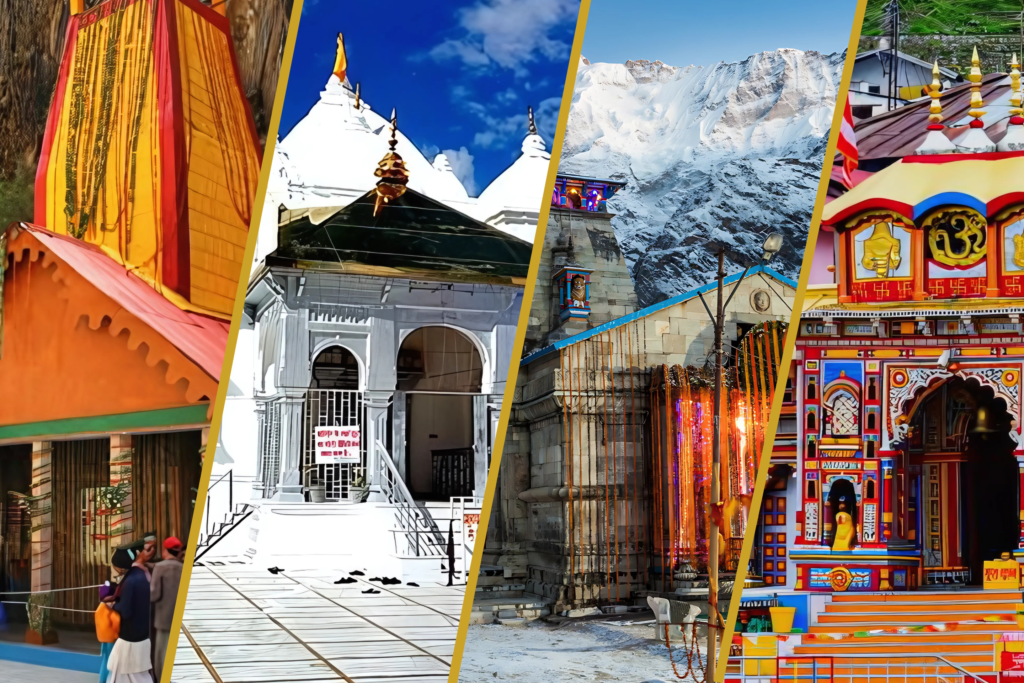
What Should you know about Char Dham Yatra!
-
Uttarakhand
-
09 Nights and 10 Days
-
11700
-
May-June and Oct -Nov
-
8
-
68
Chardham Yatra-Uttarakhand
The Char Dham Yatra is a significant pilgrimage in India that guides devotees to four sacred shrines situated in the stunning Himalayan region of Uttarakhand, often called Dev Bhoomi or the “Land of the Gods.” These shrines—Yamunotri, Gangotri, Kedarnath, and Badrinath—are highly respected in Hinduism and are believed to purify the soul, bringing devotees closer to moksha, or liberation. Traditionally, this pilgrimage is carried out in a clockwise direction, beginning at Yamunotri, which is dedicated to the Goddess Yamuna. The journey then moves on to Gangotri, the origin of the holy River Ganga. Next is Kedarnath, a temple devoted to Lord Shiva and one of the twelve Jyotirlingas, and it culminates at Badrinath, a shrine dedicated to Lord Vishnu. Surrounded by majestic, snow-capped mountains and clear rivers, these shrines provide not only spiritual satisfaction but also a chance to appreciate the breathtaking beauty of the Himalayas. The temples are open to pilgrims only during the summer months (from April/May to October/November) because they close during the winter due to harsh weather. Embarking on the Char Dham Yatra is more than a journey; it is an experience of faith, perseverance, and devotion that allows pilgrims to connect with the divine while navigating some of India’s most beautiful and challenging landscapes.
What to Experience in Char Dham Yatra
- Experience the Spiritual Essence of Dev Bhoomi Uttarakhand
- Opportunity to Visit Four Sacred Shrines of Char Dham (Yamunotri, Gangotri, Kedarnath and Badrinath)
- Explore Mana Village – The Last Indian Village
- Chance to Rejuvenate Amidst Himalayan Beauty and heel your body, mind and soul
- Opportunity to participate at each shine for spiritual Practices and Mythological Legends
- Experience firsthand Traditional Cuisine and Local Culture
- Driving through amazing HImalayan landscape and beautiful countryside
- Meeting and interaction with local and mingle with them to get insight to Himalayan lifestyle
The Itinerary
Mode of Travel: By Road
Accommodation: Deluxe Guest House / Hotel on Double Sharing Basis
Meals: Only Dinner (Vegetarians)
Pickup Point: Dehradun Railway Station
Upon arrival in Dehradun, our driver will meet you at the designated location. Once everyone has boarded the vehicle, we’ll begin our journey towards Barkot, the first destination of our spiritual yatra. The drive takes us along the scenic Rajpur Road, passing by an ancient Shiva temple and winding through the serene hills of Mussoorie, fondly known as the "Queen of the Hills." En route, we’ll stop at the iconic Kempty Falls, a perfect spot for photos and a refreshing break. Several excellent restaurants are available along the way for brunch or lunch (on a direct payment basis).
Continuing further, we’ll reach Barkot, a tranquil town nestled amidst the hills. Upon arrival, check in to your pre-booked hotel or guesthouse and spend the rest of the evening at leisure, soaking in the serene ambiance of the region.
Mode of Travel: By Road / Trek
Accommodation: Guest House / Hotel on Double Sharing Basis
Meals: Breakfast & Dinner Only (Vegetarians)
Today morning enjoy leisurely breakfast at the hotel and proceed our drive early towards Janaki Chatti, a scenic 35 km drive. Upon reaching Janaki Chatti, the starting point of the trek, we’ll begin a 6 km journey to Yamunotri Temple. For added convenience, you can opt for pony, palki, or doli services (available at an additional cost).
On reaching Yamunotri, immerse yourself in the spiritual aura of the temple. Take a rejuvenating dip in the Surya Kund hot springs, followed by a pooja ceremony at the temple. Seek blessings and have the divine darshan of Goddess Yamuna, the presiding deity of this sacred site.
After spending some peaceful and spiritual moments at Yamunotri, we’ll descend back to Janaki Chatti and drive back to Barkot. Upon arrival, relax and unwind at your hotel or guesthouse.
Overnight stay at Guest House / Hotel Meals: Breakfast & Dinner Only

Mode of Travel: By Road
Accommodation: Guest House / Hotel on Double Sharing Basis
Meals: Breakfast & Dinner Only (Vegetarians)
After a relaxed breakfast at your accommodation, we’ll board our vehicle and begin the drive to Uttarkashi, a serene and spiritually significant town along the Bhagirathi River, known as the gateway to Gangotri. During the journey, we’ll take a break to visit the Shiv Gufa, located in Mehargoan Village along the Yamunotri-Uttarkashi highway. This sacred spot is a naturally formed cave that houses a revered Shivling. It is believed to be a place of immense spiritual energy, and devotees often visit to meditate and seek blessings from Lord Shiva. Spend some quiet time here before continuing your journey.
Upon reaching Uttarkashi, check into your pre-booked hotel or resort. Uttarkashi, also known as "Kashi of the North," holds great religious significance and is home to several ancient temples, ashrams, and serene ghats.
Optional (On your own) - In the evening, you have the option to visit the Kashi Vishwanath Temple, one of the most prominent attractions of Uttarkashi. Dedicated to Lord Shiva, this ancient temple is believed to have been established by Parashuram and renovated in the 19th century. The temple’s tranquil ambiance and spiritual aura make it a must-visit for devotees. After exploring, return to your hotel and spend the rest of the evening at your leisure. You can relax in the serene surroundings of Uttarkashi, enjoy a riverside walk, or simply unwind at your accommodation.
Mode of Travel: By Road
Accommodation: Guest House / Hotel on Double Sharing Basis
Meals: Breakfast & Dinner Only (Vegetarians)
This morning we begin with amazing breakfast at the accommodation before embarking on a scenic drive to Gangotri, one of the holiest pilgrimage sites in India and the origin of the sacred River Ganga.
Enroute have an opportunity to visit Gangnani Hot Springs (Optional Stop): On the way to Gangotri, we pass through Gangnani, a serene hamlet known for its natural hot water springs. If time permits, you can stop here to enjoy a relaxing dip in the healing waters of the Rishikund hot spring, surrounded by tranquil mountain views. Many pilgrims believe a bath here cleanses the soul and prepares them for the holy darshan at Gangotri.
Upon reaching Gangotri, immerse yourself in the divine ambiance of this revered site. Begin with a holy bath in the sacred Bhagirathi River, which is considered to be the earthly manifestation of the River Ganga. The river’s pristine, icy waters are believed to wash away sins and purify the soul.
After your bath, proceed to the Gangotri Temple, a beautiful white shrine dedicated to Goddess Ganga, built in the 18th century by the Gorkha General Amar Singh Thapa. Participate in the pooja ceremony and seek blessings from the goddess. The serene temple, surrounded by majestic snow-capped peaks, offers a deeply spiritual experience. Spend some free time exploring the tranquil surroundings, taking in the crisp mountain air, and reflecting in the peaceful environment. You may also interact with local priests or shop for souvenirs near the temple.
Later in the afternoon, begin the return journey to Uttarkashi. The drive back offers more opportunities to enjoy the picturesque views of the Himalayan landscape. On arrival in Uttarkashi, relax at your hotel or resort and enjoy a quiet evening.
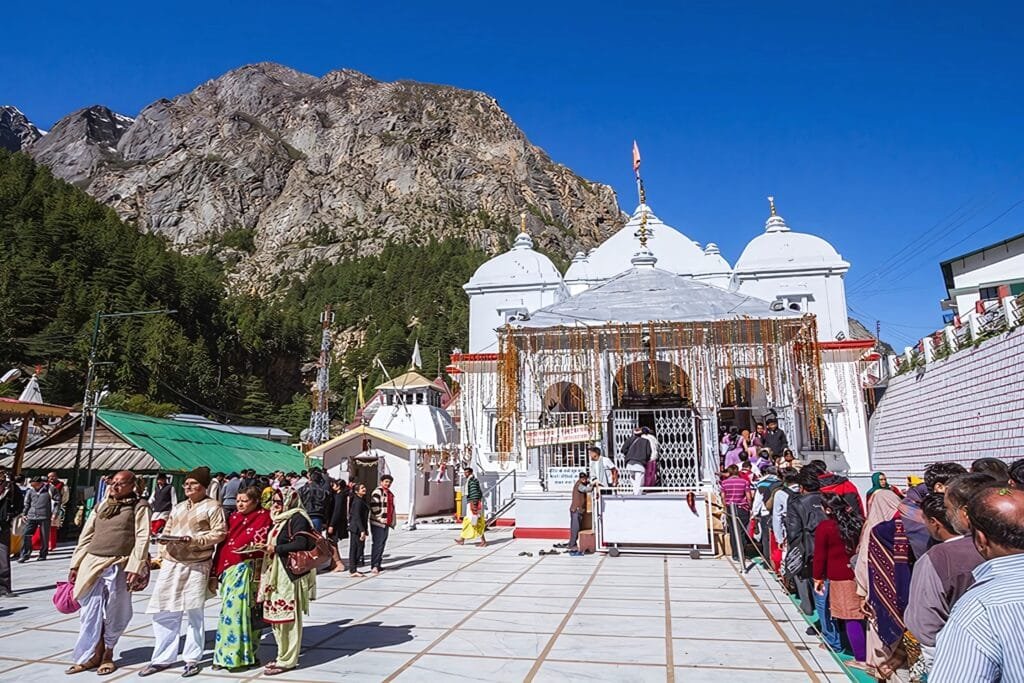
Mode of Travel: By Road / Trek
Accommodation: Guest House / Hotel on Double Sharing Basis
Meals: Breakfast & Dinner Only (Vegetarians)
After a hearty breakfast at the hotel, we begin our journey to Guptkashi, a scenic town nestled in the Garhwal Himalayas. The drive takes us through picturesque landscapes and charming villages, offering glimpses of the majestic mountains that surround the region.
Enroute experience River Mandakini at Tilwara: As we drive along the Mandakini River, which originates from the sacred Kedarnath region, we’ll enjoy spectacular views of the river winding through the valleys. The river flows through Tilwara and is an important part of the Kedarnath pilgrimage route. The lush green surroundings and the river’s serene flow make this stretch of the journey incredibly beautiful.
Upon arrival in Guptkashi, a peaceful town at an altitude of 4,330 feet, check into your pre-booked hotel or resort. Guptkashi is renowned for its spiritual significance, particularly the Vishwanath Temple, dedicated to Lord Shiva. The temple is similar in design to the famous Vishwanath Temple in Varanasi and holds great religious importance for devotees.
Spend the evening relaxing or exploring the town at your own pace. Guptkashi offers a tranquil atmosphere for rest and reflection, making it a perfect stop before continuing the journey to Kedarnath.
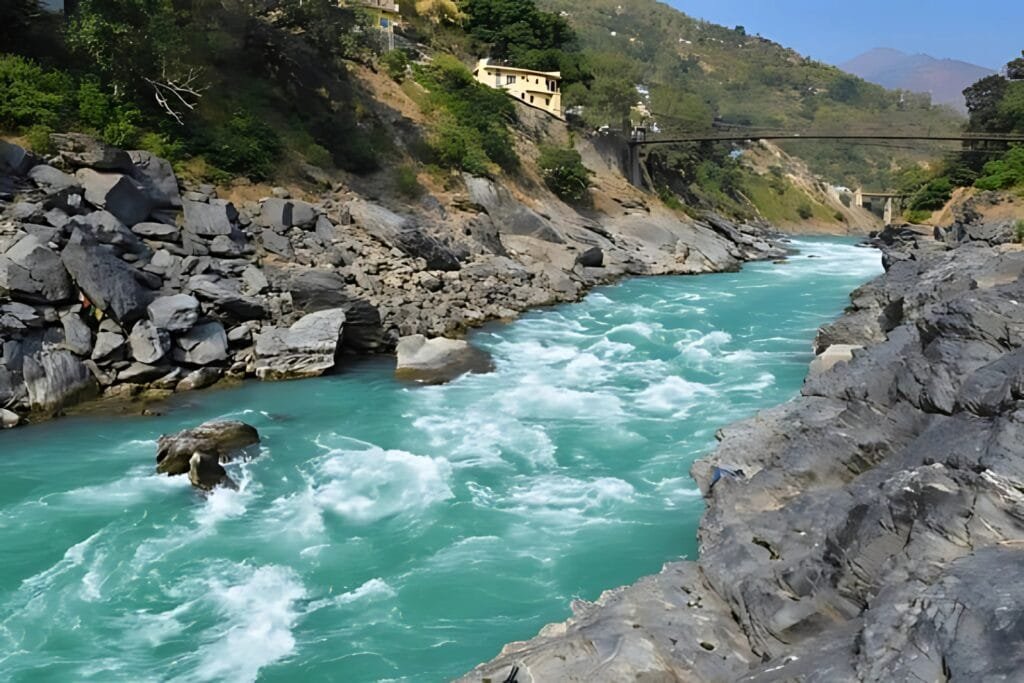
Mode of Travel: By Road & Trek
Accommodation: Basic Guest House on a Multi-sharing basis
Meals: Breakfast Only (Vegetarians)
Guptkashi to Sonprayag (30 Kms): By our dedicated vehicle
Sonprayag to Gaurikund: By Local Union Taxi
Gaurikund to Kedarnath: 16 Kms approx 9-10 Hrs
This morning we enjoy our breakfast at the accommodation, in case we need to leave early morning
around 2-3 Am we shall proceed with a packed breakfast from the accommodation Start your day with an
early morning drive to Sonprayag, which is located 30 km away and serves as the gateway for Kedarnath Temple. From Sonprayag, take a local shuttle or Union Taxi to Gaurikund, which is just 5 km further, with a fare ranging from Rs. 80 to Rs. 100 per person for a one-way trip. Once you reach Gaurikund, take a moment to explore the Gauri Temple and rejuvenate in the natural hot springs before commencing your trek to Kedarnath. The trek to Kedarnath Dham offers stunning landscapes, beautiful waterfalls, and breathtaking views of the Himalayas. Travellers can choose to hire ponies, palkis (palanquins), or opt for a helicopter service (make sure to pre-book in advance). Upon reaching Kedarnath, check into your accommodation, which could be a guesthouse or a dormitory-style option. Spend your evening visiting the Kedarnath Temple, where you can participate in the moving evening Aarti and soak in the spiritual atmosphere of this historical site.

Mode of Travel: By Trek & Drive
Accommodation: Home stay / Hotel
Meals: Dinner Only (Vegetarian)
Kedarnath to Gaurikund by trek: 16 Kms approx 9-10 Hr
Gaurikund to Sonprayag by drive: 5 Kms By Local Union Taxi
Sonprayag to Saari / Ukhimath: 30-40 Kms approx. 2 Hrs
Start your day early with the Aarti ceremony at the sacred Kedarnath Temple. Participate in this auspicious ritual, which is a divine experience for every pilgrim, before beginning the return trek to Gaurikund. The trek is approximately 14 km long and takes around 6-7 hours to complete, offering breathtaking views of the Himalayan landscape as you descend.
Upon reaching Gaurikund, take a local taxi to Sonprayag (ensure you reach Sonprayag by 1:00 PM). From Sonprayag, we will board our vehicle and proceed towards the quaint Sari Village / Ukhimath.
Upon arrival in Sari Village / Ukhimath, check into your pre-arranged homestay/ hotel, where you’ll be treated to homemade Garhwali cuisine prepared by your warm and welcoming hosts. It’s a wonderful opportunity to experience the local culture and enjoy a cozy evening in the hills.
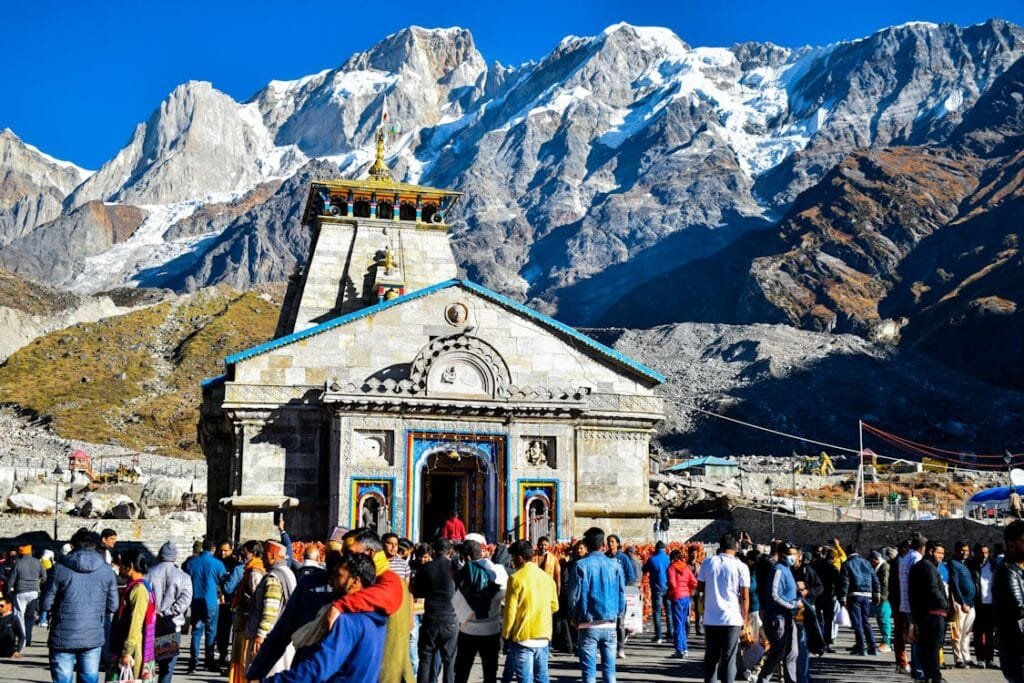
Mode of Travel: By Drive
Accommodation: Guest House / Hotel
Meals: Breakfast and Dinner Only (Vegetarian)
Today morning we start the day with a delightful homemade breakfast at your homestay. Afterward, board your vehicle and embark on a scenic journey to Badrinath, one of the most revered pilgrimage sites in India. We drive via Chopta (Mini-Switzerland): The drive takes you through the stunning Chopta Valley, often referred to as the "Mini Switzerland of India." Enjoy the mesmerizing beauty of lush green meadows, dense forests of rhododendron trees, and panoramic views of snow-capped Himalayan peaks. Take a moment to pause and soak in the serene ambiance of this picturesque region. Gopeshwar and Chamoli: As we continue, the drive winds through Gopeshwar and the Chamoli district, known for their enchanting landscapes, charming villages, and rich cultural heritage.
This route is considered one of the most beautiful mountain drives, offering ample opportunities for photography and short stops to capture the breathtaking vistas. Along the way, enjoy meals (at your own expense) at roadside eateries, where you can sample local flavors and delicacies.
By evening, we’ll arrive at Badrinath, the sacred abode of Lord Vishnu. Check into your cozy hotel and unwind after the day’s journey. Later, enjoy a delicious dinner and relax as you prepare for the spiritual experiences that await you in Badrinath.
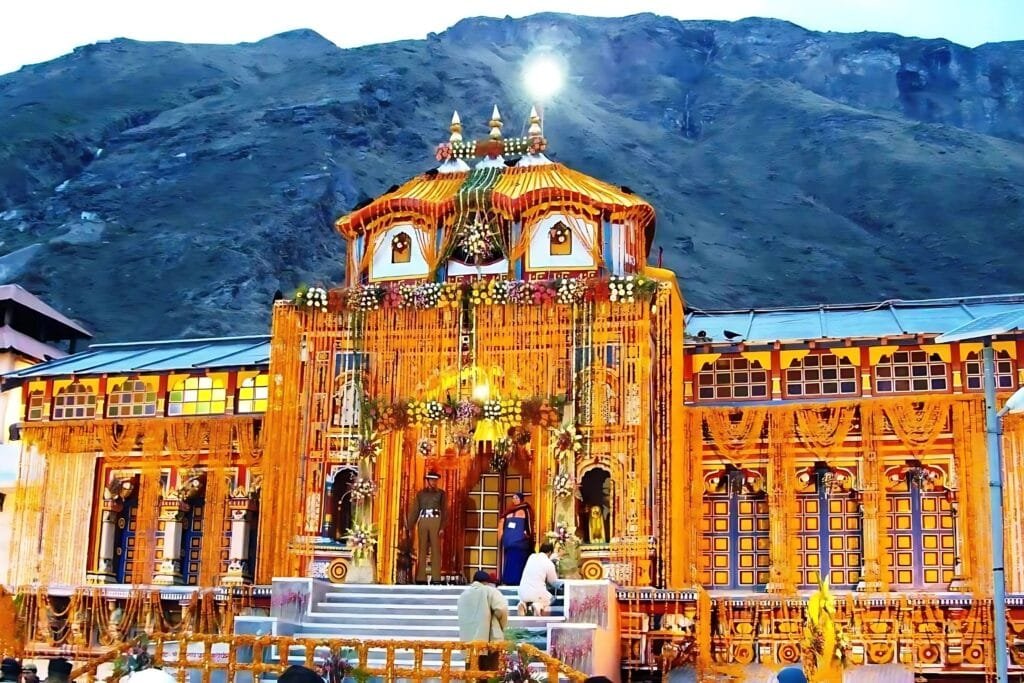
Wake upto to beautiful spiritual morning and begin your day early with the Aarti ceremony at the sacred Badrinath Temple, one of the most revered sites in the Char Dham Yatra. Feel the divine energy as the morning rituals and chants fill the air with spirituality. After the Aarti, we proceed on a short drive to Mana Village, the last Indian village before the India-Tibet border. This picturesque village, nestled amidst the majestic Himalayan peaks, is a popular attraction for visitors from across the world.
Mana Village: The village is home to the Bhotia community, descendants of the ancient Mongol tribes, who live in quaint stone cottages adorned with colorful decorations. Their lifestyle, steeped in traditions, reflects the simplicity and resilience of life in the high Himalayas.
Shopping: Mana is also renowned for its beautifully handcrafted woolen items, such as shawls, caps, and scarves. Don’t miss the opportunity to shop for these unique souvenirs.
Scenic Beauty: The stunning natural surroundings and the charm of the village will leave you captivated. Mana is not just a village but an experience of culture, nature, and history combined.
After exploring Mana Village, we drive back to Badrinath. Upon arrival, you can choose to take a rejuvenating bath at the Tapt Kund, a natural hot water spring believed to have therapeutic properties.
Later in the evening, visit the Badrivishal Temple for darshan and attend the Aarti ceremony, a profoundly spiritual experience that marks the conclusion of the day’s rituals. Badrinath is also an important place for performing Pinddaan Shraddh, a sacred ritual for honoring one’s ancestors (Pitrus).
Overnight stay at Guest House / Hotel Meals: Breakfast & Dinner Only
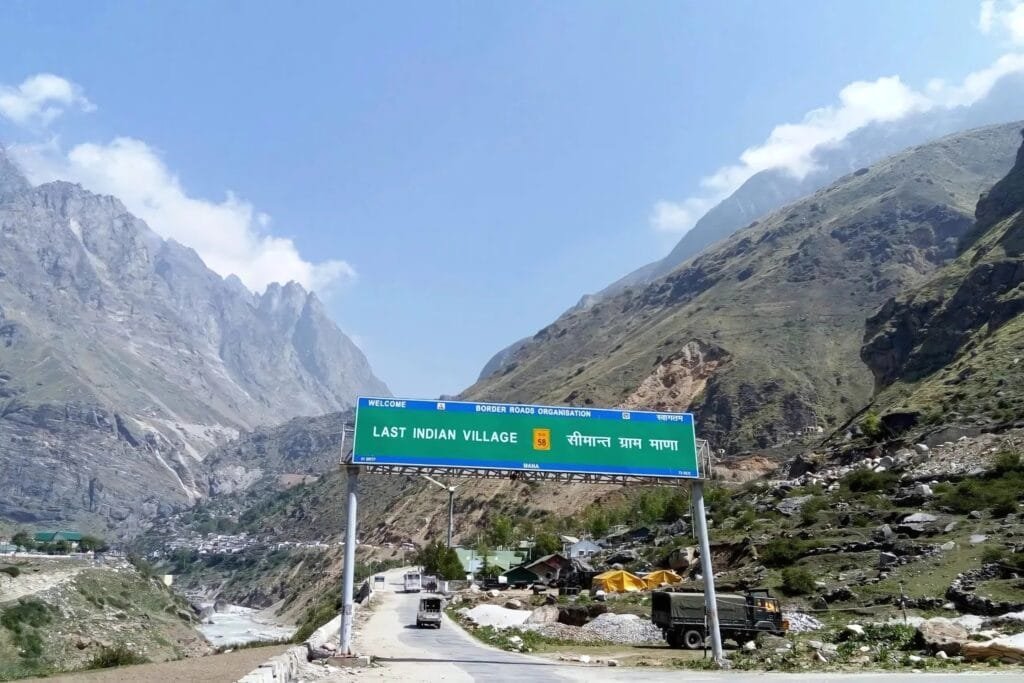
Its, end of our amazing Char Dham Yatra trip, again we start our day with a hearty breakfast at your hotel, followed by attending the morning Aarti ceremony at the sacred Badrinath Temple, a truly spiritual experience to bid farewell to this holy town.
After the Aarti, we embark on a scenic drive to Rishikesh, descending from the majestic Himalayas and passing through breathtaking landscapes, charming villages, and lush green valleys.
The journey offers several picturesque views and an opportunity to reminisce about the serene experiences from your Char Dham Yatra. You can enjoy short breaks for refreshments and photography along the way.
We are expected to arrive in Rishikesh by evening, so please plan your onward travel or accommodation accordingly.

Inclusions and Exclusions
The Cost Includes:-
- Accommodation:-
- 8 Nights accommodation during yatra will be provided using a good standard hotel on Triple sharing basis on MAP Basis (Breakfast & Dinner Only)
- 1 Night accommodation in Kedarnath using local guest houses (Basic) on a multi-sharing dome style on EP Basis (no meals in Kedarnath).
- Transportation:-
- Pickup at Dehradun close to Dehradun railway station & Drop at Natraj Chowk in Rishikesh as per the itinerary (non-ac) in the hills.
- Driver daily allowance
- Yatra Green Tax
- All Toll and Parking fees
- Meals- Breakfast and Dinner on a buffet fixed menu based at all places (vegetarian), except in Kedarnath (No meals)
The Cost Excludes:-
- GST 5%
- Any Travel / Medical / Personal insurance
- Any Airfare / Train fare to / from Dehradun (Can be booked at additional cost).
- Expenses on mineral water, soft drinks, alcoholic beverages, cigarettes, and snacks unless specifically mentioned in the "Cost Includes" section.
- Personal expenses such as laundry, telephone calls, room service, and tips.
- Any meals (lunch & snacks) not mentioned in the "Cost Includes" section.
- Entrance fees to monuments, Temple, or attractions not mentioned in the itinerary.
- Camera fees or charges for videography at any attractions.
- Porterage / Pony / Palki services to / from Kedarnath
- Any additional hotel charges for early check-in, late check-out, or room upgrades.
- Costs incurred due to delays or changes in flights, trains, or other modes of transport.
- Expenses arising from natural calamities, roadblocks, political disturbances, or unforeseen circumstances.
- Any additional taxes or surcharges imposed by the government or authorities during the travel period.
- Any other expenses not explicitly mentioned in the "Cost Includes" section.
Things to Carry for Char Dham Yatra
Char Dham Yatra is a spiritually profound trip through the Himalayas, and the region’s unpredictability in weather can prove just as difficult as the terrain. In the yatra time (May through October), temperatures at the Char Dham shrines can vary and can be quite extreme. Experience temperatures that vary between 0°C to 15°C, especially during the mornings, as well as late in the evenings. Even though it is summer, high elevations are prone to cold as well as sudden rainfalls, and even snow. The carefully curated list by The Travel Foot will ensure you’re well-equipped to be warm and cozy on your trip.
Clothings:-
Base & Inner Layers
- 3-4 Thermo outerwear set (top and bottom) Essential to wear in early mornings as well as evenings.
- 2 pair of wool leggings or base-layer pant for an additional layer of insulation to warm dhams
- 3-4 sets consisting of garments (preferably fast-drying and moisture-wicking)
- 2-3 pairs of warm leggings or tights (optional to women and great for layering beneath salwars and pants)
Mid Layers & Casual Wear
- 5 Comfortable and comfortable clothing Sets (cotton/synthetic mixtures to be worn on plains, and warmer layers for hilly terrain)
- 3 Full-sleeve T-shirts or tops that wick moisture Protect from the chill and sun
- 1-2 Kurtas / loose tunics (for modest temple wear)
Outerwear
- 2-3 Sweaters and fleece jackets light and cozy
- 1 Down jacket or heavy woollen required for Kedarnath as well as Yamunotri
- 1 Windcheater that is waterproof also known as raincoat and an hood. It is essential to be prepared to protect against abrupt mountain rains
- 1 Rainponcho (optional) It is easy to carry around and put on your bag for the day.
Bottom Wear
- 3-track pants or trekking trouser Comfortable elastic, stretchable and quick drying
- 1 pair of cozy wool pantalons (for cooler night or temple visit)
- 1-2 Traditional outfits (salwar kameez, dhoti/kurta) for temple rituals (optional but respectful)
Accessories for Warmth
- 1 Cap or beanie made of wool to be used ideal for early mornings or high-altitude places
- 1 Sun cap, or sun cap suitable for the midday sun in areas with open spaces
- 1 – 2 Scarves and mufflers or neck gaiters – all purpose such as sun, cold as well as dust and dirt protection
- 1 A stole or shawl can be used to cover the temples or add warmth
- 1 pair of woolen gloves to use ideal for mornings in the early hours or to take part in a Kedarnath temple visits
- 1 pair with cotton gloves (optional gloves are optional to protect yourself from sun or cold)
Socks & Footwear Liners
- 3-4 pairs cotton socks
- 3-4 pairs of woolen socks specially for colder and chilly nights.
- Ankle support sleeves or sock liner (optional for use to be used for treks that are long)
Nightwear
- 1 Set of comfortable clothing for nighttime (fleece or fully-sleeved pyjamas are suggested)
- Thermal night socks (optional – keeps feet warm overnight)
Pro Tip:
Dress in layers based the altitude and the time of the day. Mornings that are early at Kedarnath could feel like winter. During the afternoons, the lower hills may be pleasant. Keep a layer of warm clothing and rain cover inside your backpack for the day.
Footwear Essentials
1 pair of durable trekking or walking sneakers: It is recommended that shoes are waterproof and have ankle support, and soles that are non-slip. They are ideal for difficult tracks and paths that are uneven between Kedarnath as well as Yamunotri.
1 Light sandals, or floating shoes: Ideal for walking short distances for temple trips, short walks, or traveling days. Choose quick-dry material for wet conditions.
1 Slippers that are comfortable and comfort: For indoor use in hotel rooms, dharamshalas, or during breaks. It is easy to put on after a strenuous hike.
Pro Tip:
It’s important to get your trek footwear before the trek in order in order to avoid blisters, and also ensure the best satisfaction. Always keep an additional pair of dry socks on hand for treks, so you’re ready for whatever situation may arise.
Personal Care & Hygiene Essentials
Stress the significance of taking care of your personal needs when you live in cold and remote areas. If you prioritize cleanliness, skin protection as well as convenience, you’ll be able to manage these harsh situations with ease.
Daily Hygiene
- Toothbrush & toothpaste (travel size)
- Tongue cleaner
- Facial wash (mild and hydrating)
- Body wash/soap (preferably an antibacterial size, suitable for travel)
- Shampoo and conditioner (travel packets or Sachets)
- Quick-drying towel (microfiber suggested)
Skincare & Protection
- Moisturizer/cold Cream (non-greasy to the dry mountain dry mountain air)
- Lip balm that contains SPF (must-have when you are at altitudes)
- Sunscreen (SPF 30+ or higher, broad-spectrum)
- Face wipes (alcohol-free, for refreshment on-the-go)
- Hand cream, or petroleum jelly (optional however useful)
- Aloe vera gel (for sunburn or skin irritation)
Hair Care
- Oil for hair (small bottle)
- Comb/hairbrush
- Clips, hair tie or bands
- Dry hair (optional to be used for longer periods of time without access to water)
Toiletries & Feminine Hygiene
- Napkins/tampons/menstrual cups (carry additional due to the limited supply)
- Toilet roll paper (at minimum 1-2 rolls, often not found in public restrooms)
- Wet wipes and dry tissues
- Urination disposable or reusable device designed for females (optional however useful in remote regions)
- Wash for hygiene in the intimate area (travel size, ad-hoc)
Grooming & Extras
- Nail cutter
- Mirror small (unbreakable recommended)
- Razor/shaving kit (if needed)
- Earbuds, cotton swabs
- Safety pins and a small sewing kit (in the event of mishaps with clothing)
- Deodorant/perfume (travel-size sprays or rolls-on)
- Strips of laundry detergent or Sachets (for washing clothes by hand)
Pro Tips:
- Select waterproof, container that is travel size for a better use of the space, and also avoid chaos.
- Utilize an bathroom bag in order to ensure that your toiletries are dry and organized.
- Pack items into ziplock bags for maintaining cleanliness and keep dry items separate from wet ones.
Medicines & First Aid Kit
Security and health is a top priority when it comes to The importance of safety, health and security is paramount throughout the Char Dham Yatra, especially given the lack of medical services. A kit for personal use, with a complete first aid kit can save lives and give an assurance of safety.
Essential Personal Medications
- Medicines prescribed for regular use (with written dosage guidelines)
- The prescriptions’ copies (in cases of refills or emergency)
- Allergic reactions or medications for chronic conditions (asthma and diabetes BP and so on. )
Basic Over-the-Counter Medicines
- Paracetamol / Combiflam – for fever and general pain
- Cold and cough tablet (like Cetirizine, Benadryl, and D-Cold)
- Motion sickness tablets (Avomine, Domperidone)
- Antacids (Digene, Gelusil, Eno)
- Antidiarrheals (Loperamide or Norflox-TZ – only if prescribed)
- ORS / Electral sachets – for dehydration and electrolyte balance
Topical Applications
- Antiseptic liquid (Dettol/Savlon)
- Antiseptic cream (Betadine, Soframycin)
- Muscle relaxant spray or gel (Volini, Moov)
- Anti-itch cream/ Calamine lotion (for insect bites, rashes or other itchiness)
- Burn ointment (like Burnol – optional)
First Aid Supplies
- Sterile cotton & gauze pads
- Adhesive bandages (Band-Aids, assorted sizes)
- Crepe bandage (for sprains)
- Surgical tape/micropore
- Safety pins & scissors
- Tweezers (for getting rid of ticks, splinters and ticks. )
- Digital thermometer
- Disposable gloves (1-2 pairs)
Altitude & Cold-Related
- Diamox (Acetazolamide) – for altitude sickness
- Do not take this medication without consultation with your doctor
- Spray for nasal use (for nasal obstruction at higher altitudes)
- Lozenges for the throat / Strepsils (soothing for cold or dry air)
Insect & Environment Protection
- Mosquito repellent cream/spray (like Odomos or Good Knight)
- Vapour rub or inhaler (if you are prone to congested)
- Sunburn relief gel or lotion
Pro Tips:
- All medicines should be stored inside a water-proof zip bag or in a cases.
- Mark medicines with a clearly marked label if packaging for elderly or group usage.
- A small pouch filled with medications for emergencies inside you backpack for your day and keep it separate from the main bag.
Important Documents
Be sure to carry the correct documents is crucial for smooth travel, verifying of checkpoints and hospital emergencies and accommodation throughout this Char Dham Yatra.
Identification & Registration
- Valid Government ID (Aadhaar card, Voter ID, Driving License, or Passport)
- Make sure to keep both the originals and copies of the original.
- Char Dham Yatra Registration Printout
- It is mandatory at all entry locations. Make sure to keep a copy of the soft copy of the form on your smartphone.
- Health Fitness Certificate (if necessary, especially in relation to Kedarnath trek) Kedarnath Trek)
Travel & Stay Documents
- Printed Hotel Booking Confirmations
- It can be helpful for situations when network issues hinder email/SMS accessibility.
- Train / Bus / Flight Tickets (Hard & Soft Copies)
- Yatra ePass / Helicopter Tickets (if booked)
Photos & Backups
- 3-4 Passport-size Photographs
- is required for registrations, permits, or for emergency identifications.
- Photocopies of All Key Documents
- Maintain two sets of them in separate places in your bag, and also with a co-traveler (if you have any).
Digital Backup Tips
- Find all the important documents, scan them and save them
- In your phone’s gallery
- In cloud storage (Google Drive, Dropbox, etc. )
- On a USB drive (optional)
Electronics & Accessories
- Mobile phone that comes with charger
- It is recommended to use an prepaid SIM (like BSNL or Jio) to have greater connectivity in the mountains
- Energy banks (10,000 mAh or greater) – an essential item for those who travel long days or power failures
- Headlamp or torch (with additional batteries)
- is essential for temple visits in the early morning and other areas without street lights
- Universal extension cord/adapter to allow sharing charging in hotels and dharamshalas
- Earphones and headphones are great for meditation, music or even calls at a moment’s notice
- Camera (optional) is a great option if you’re looking to take high-quality pictures
- Extra memory cards and cameras batteries Storage could be restricted in remote locations.
Energy Bars & Snacks
- Dry fruit and nuts trail mix – – energy-rich and not-perishable
- Protein bars/energy bar are compact and perfect for long hikes
- Instant food (cup noodles, soup sachets, poha, upma) – add hot water
- Biscuits as well as glucose and salty snack foods fast energy boost
- Candy/sweets/toffees cubes are useful for nausea, or when you are low on energy
- Reusable thermos or water bottle to keep well-hydrated while on the move
- Electrolyte / ORS packets are essential to avoid fatigue and dehydration.
Miscellaneous Essentials
- Daypack/small bag used for everyday necessities during hikes as well as temple trips
- Lockable suitcase or trekking rucksack – depending on travel style
- Umbrella or poncho – for sudden mountain rains
- Sunglasses (UV-protected) – protect your eyes at high altitudes
- Walking stick/trekking pole – helpful on steep or uneven terrain
- Small book of prayers (also known as japa mala) to be used for individual devotion to the temples
- Polybags / dry bags – for wet clothes or organizing items
- Safety pins needles and needle kit to help with fast clothing repairs
- A neck or travel pillows is ideal for longer journeys or for better sleep
Essential Travel Tips for Char Dham Yatra
Be protected, courteous and well-prepared throughout your travels.
- Pack Smart & Light: Take only the essentials. Pick versatile, multi-layered clothes and small gear for easy movement during temple trips.
- Go Plastic-Free: Uttarakhand completely restricts the use of single-use plastics. Carry baggies, bottles and other containers that are recyclable and other eco-friendly options in order to reduce environmental impacts.
- Carry Cash: ATMs are a bit scarce and in remote locations, they are not reliable. Make small amounts of cash for purchases in the local area or tips as well as donation to entry points.
- Acclimatize to Altitude: The high altitude can impact the quality of your breath and levels of energy. Keep your pace, stay away from overtraining as well as hydrate yourself with ORS and warm liquids.
- Follow Temple Etiquette: Dress modestly and in conventional attire to enter temples. Dress your legs and shoulders in a modest manner as well as avoid extravagant or tight-fitting clothing to show respect.
Important Notes (t&c)
Price Adjustments and Extra Charges
If there is a significant rise in transportation costs (including fuel surcharges), accommodations, or services provided by third parties (like local unions or government entities), the customer will be responsible for any additional expenses incurred.
Quoted prices are based on the current Indian tax framework. Any changes, new taxes, or tax increases imposed by authorities will lead to extra charges for which the customer is liable.
Itinerary Changes and Unexpected Events
The Travel Foot shall not be accountable for itinerary changes caused by natural disasters, landslides, flight, train, or bus cancellations and delays, adverse weather, or other unforeseen circumstances.
Any additional costs incurred in such situations will be the customer’s responsibility. During emergencies, such as natural disasters, our operational partners will provide assistance on the ground to ensure safety and address immediate needs. However, the expenses for such emergency actions will fall solely on the customer.
Please be aware that the trekking and driving times listed in the itinerary are approximate and may vary due to breaks for food and photos, road or weather conditions, or other unforeseen factors.
Risks and Liability
We will not be held responsible for outcomes resulting from natural disasters, severe weather conditions, airline delays or cancellations, strikes, theft, quarantine measures, civil unrest, government regulations, or other force majeure events.
The company is not liable for accidents or incidents involving vehicles or other modes of transportation during the scheduled program. Travelers acknowledge and accept the potential risks associated with travel and adventure activities. We will notify you promptly of any changes in circumstances, but any additional expenses due to such events will be the responsibility of the customer.
We also do not take responsibility for lost, stolen, or damaged personal belongings during the trip. It is recommended that travelers safeguard their belongings and consider obtaining travel insurance.
Booking and Cancellation Policy
By making a booking with us, you agree to and accept all terms and conditions outlined in this document. The company reserves the right to amend or cancel any trip based on prevailing conditions. Any additional expenses incurred from such changes will be the customer’s responsibility.
Insurance and Medical Responsibilities
All participants are strongly encouraged to purchase comprehensive travel insurance that covers trip cancellations, medical emergencies, and personal belongings. Travelers must disclose any medical conditions or limitations before booking. The company will not assume responsibility for any health-related issues during the trip.
General Information
While the company will strive to provide the best possible arrangements for all aspects of the trip, unforeseen challenges may still arise. Participation in the trip indicates acceptance of all the terms mentioned above, including any necessary last-minute changes for safety, operational, or logistical reasons.
Common Questions from our Travellers
The Char Dham Yatra refers to the pilgrimage to four sacred Hindu shrines in Uttarakhand: Yamunotri, Gangotri, Kedarnath, and Badrinath. It is believed to cleanse sins and lead to salvation.
The Yatra typically starts in late April or early May and ends around October/November before winter sets in. Exact dates depend on the Akshaya Tritiya and Diwali festival calendar
The Yatra typically takes 10-12 days to complete if visiting all four shrines, depending on the route and mode of transport.
Yamunotri: Accessible by trekking 6 km from Janki Chatti.
Gangotri: Connected by road; cars and buses can go up to Gangotri town.
Kedarnath: Requires a 16 km trek from Gaurikund or a helicopter ride.
Badrinath: Accessible by road; vehicles go up to the temple.
Yes, helicopter services are available for Char Dham. They cover Kedarnath and Badrinath most commonly and offer quick and comfortable travel options.
Yes, you can use private vehicles, but the roads are narrow and prone to landslides. Hiring experienced drivers or vehicles of “The Travel Foot ” is recommended.
The best time is May to June and September to October. Avoid the monsoon season (July-August) due to landslides and heavy rains.
Yes, especially trekking to Yamunotri and Kedarnath. People with health issues like heart problems or breathing difficulties should consult a doctor before the trip.
Medical facilities are limited in remote areas, but there are health camps and dispensaries en route. Carrying personal medication is crucial.
The Yatra is considered highly sacred in Hinduism, representing a journey to the abodes of deities Yamuna (Yamunotri), Ganga (Gangotri), Lord Shiva (Kedarnath), and Lord Vishnu (Badrinath).
Yes, dress modestly and respectfully as these are religious sites. Avoid smoking, drinking, or eating non-vegetarian food during the Yatra.
Yes, online and offline registration is mandatory. It helps authorities monitor pilgrims and provide safety measures.
Registration can be done online via the official Char Dham website or at designated counters in Haridwar, Rishikesh, and other entry points. The Travel Foot will assist you for getting your registration done.
Accommodations range from budget guesthouses, dharamshalas (pilgrim rest houses), and mid-range hotels to luxury stays in major towns. Booking in advance is recommended during the peak season.
Yes, vegetarian food is available at most stops. Carry bottled water and ensure it’s sealed. Avoid drinking unfiltered water from rivers or streams.
Yes, but the journey can be challenging for the elderly and young children. Proper planning, adequate rest, and health checks are essential.
Nearby attractions include Hemkund Sahib, Valley of Flowers, Mana Village, Vasudhara Falls, and Tungnath Temple. You can plan additional days to visit these places.
Carry rain gear, avoid traveling during heavy rains, and be cautious of landslide-prone areas. Stay updated on weather conditions.
Photography is generally allowed outside the temples but not inside. Always respect temple guidelines and customs.

